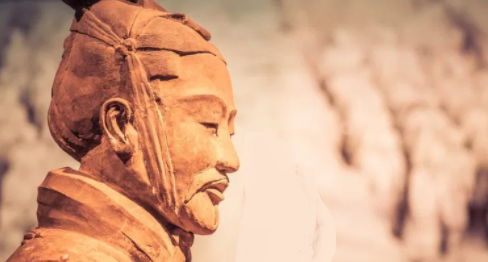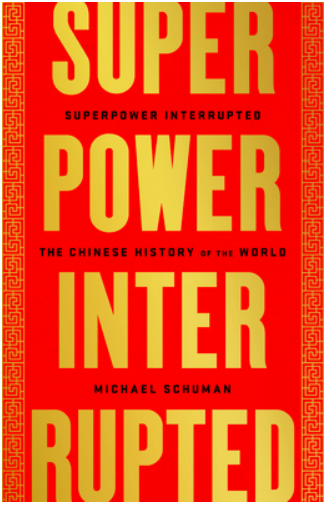
What does China want?



In the recent US presidential Television debate, Donald Trump’s oneliner was ” China ate your lunch Joe” against challenger Joe Biden. According to Trump’s view, China is a global villain that has visited a “Plague” upon the world while stealing US jobs and intellectual properties, Biden for his part has called XI Jinping, China’s leader, a “Thug” as China is used as a blunt rhetorical instrument to win American votes.
Michael Schuman, a foreign correspondent for Asia for 23 years, first for the Wall Street Journal and then as a Business correspondent for the Time Magazine, based in Hong Kong and Beijing, traces back to the founder of the Ming Dynasty ( 1368-1644AD), the Hongwu Emperor, as the spiritual kin of Xi Jinping, who introduced a more personalised rule which nursed a sense of victimhood to fuel fierce nationalism, to the collegial model that prevailed before them. Zhu Yuanzhang, the Hongwu Emperor, modeled his dynasty as a renewal of native Chinese rule after a century of discrimination under the Mongols.
Schuman’s colourful informative story is filled with influential thinkers, epic battles, fascinating characters, and decisive moments of how the Chinese view their own history and how it is different from Western civilisation, and this history is shaping Chinese economic policy and attitude towards the United States and the rest of the world, relations with its neighbours, positions on Democracy and human rights, and notions of good government.
According to the Chinese, they had the richest economy, strongest military, and the most advanced philosophy, culture, and technology. The collision with the WEst knocked China’s historical narrative off course for the first time, the 5000-year-old reign as an unrivaled superpower came to its ignominious end.
Chinese are fixated on returning their country to its former greatness, restoring the Chinese version of its place in the world, and to reclaim their former dominant position in the world.
America’s fascination with China is endless after spawning many experts on China, academic and journalists alike, and even diplomats like Henry Kissinger, knowledge exists in a vacuum of ignorance about Chinese neighbours particularly those to the south and south-east.
For most of the past two thousand years, it was foreigners, mainly arriving on ships, who drove global trade – ships from the Roman empire in Egypt, Japan, the Malay archipelago, the Tamil and Gujarati worlds, Arabia, etc.
Schuman simply ignores the fact that the whole of Southeast Asia, the island, and the mainland, from Myanmar to Mindanao was far more influenced by Indian beliefs, systems, and language than China. How come given the proximity of China? Whatever China’s political power, clearly the soft power was exercised more by Indians whose only hard power projection was by the Tamil Cholas against the Srivijaya in the early 11th century.
The book continues about the so-called Silk Road without seeming to recognize that there were only brief periods when it really did directly link China to Central Asia, Persia, etc. For long, seaborne trade has vastly exceeded overland trade. He writes much about Rome’s demand for Chinese silk and the cost to its store of wealth. But Rome had massive trade with India – a hundred large ships a year from the Red Sea ports bringing back luxuries mainly from India and Southeast Asia. Rome sold wine and some manufactures but mostly suffered a trade deficit made up of silver.
China#s population and size often attract foreign traders, notably the Malays, Tamils, Arabs, Persians who flocked to Guangzhou during the prosperous Tang dynasty. But Indian textiles, Persian artifacts, spices from the archipelago were just as important as Chinese ceramics.
chuman’s preference for Chinese myths over reality peaks with his description of Zheng He’s “treasure ship” vessels as 140 meters long, so vastly bigger than any known wooden ships before or since. No serious naval historian accepts this figure, an interpretation of a number written 200 years later in the Ming annals. In reality, there is no record of any Chinese wooden seagoing ship bigger than about 50 meters. Portuguese arriving in the region just 70 years after Zheng He noted that four-masted Javanese junks were much larger than Chinese ones. Schuman repeats the Ming annals imperial propaganda about Zheng He in ways which will gladden the hearts of Beijing officials trying to justify imperialism in the South China Sea and its self-assumptions about being the boss of Asia and assuming that so-called “tribute” was mostly just a tax that was made to rulers for permission to trade. Chinese traders paid it to Philippine datus.
Xi characterises himself as the champion of the Chinese nation after humiliation brought by Western powers.
” The narrative of Chinese history that Xi’s propaganda machine drills into the minds of modern subjects are a tale of national renewal that could easily have been scrawled in a Hongwu edict.” Schuman writes. The “us versus them” mentality that Xi exposes and applies increasingly to China’s dealings with the outside world – was clearly stated in a speech he gave in 2014 at Peking University.
While Chinese companies are now at the forefront of global technology and its construction giants lead the world, its governance models have progressed little since the Ming Dynasty, BRI projects are conceived in secrecy, bankrolled mostly by big state banks, and subjected to little or no social, environmental or financial scrutiny by the people of recipient countries.
Superpower Interrupted: The Chinese History of the World by Michael Schuman, Public Affairs $18.99/£25, 384 pages.
